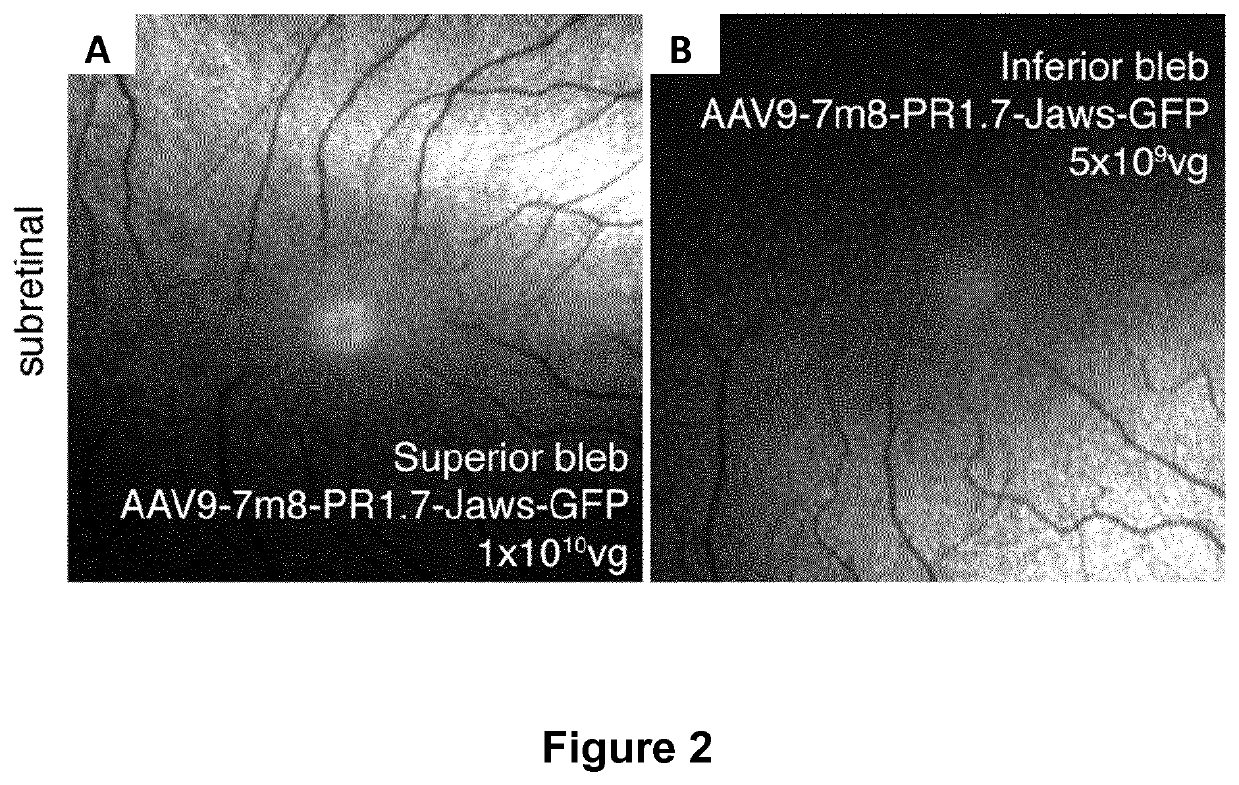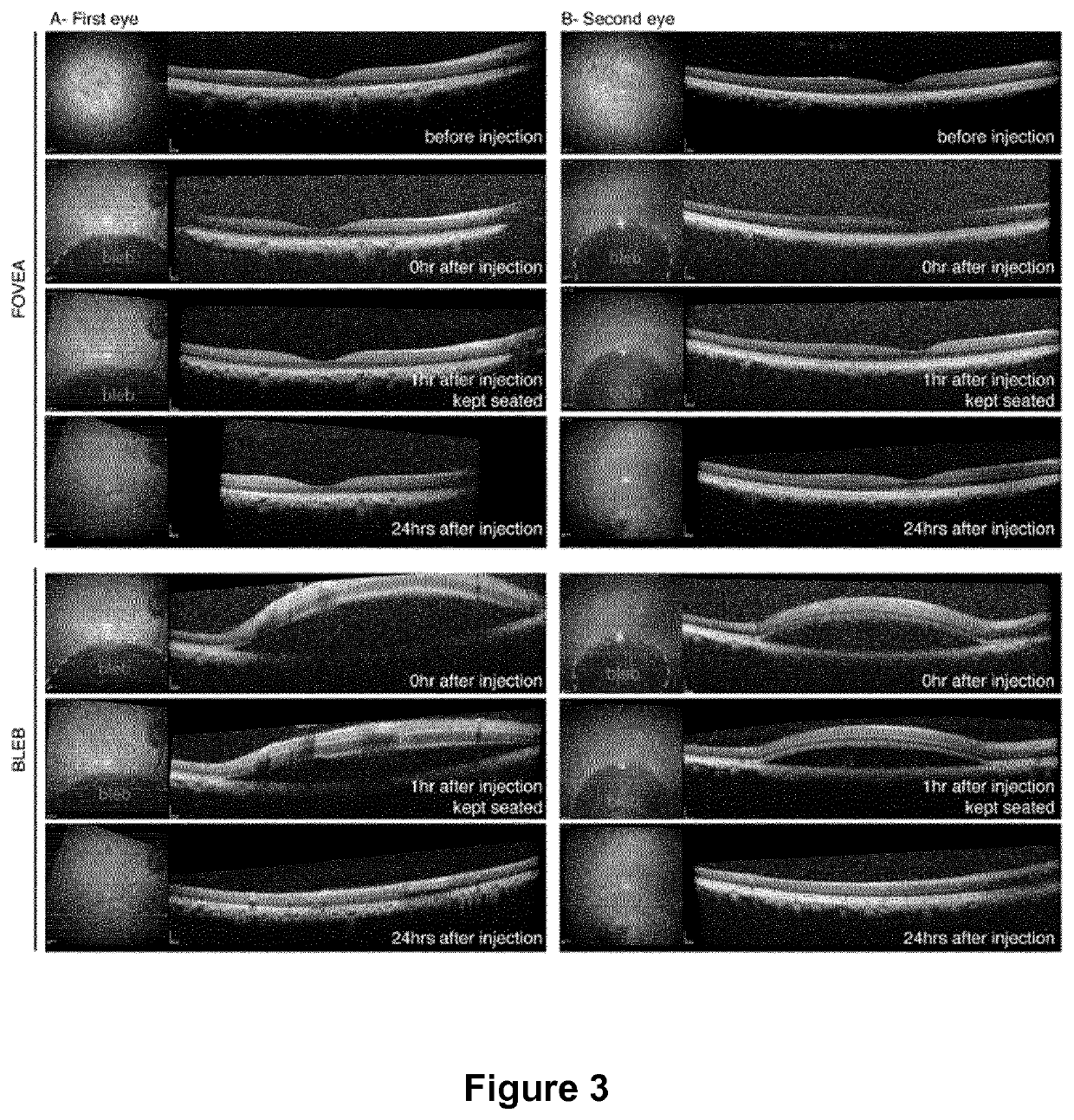Methods of expressing a polynucleotide of interest in the cone photoreceptors of a subject comprising the subretinal delivery of a therapeutically effective amount of a recombinant aav9-derived vector
a cone photoreceptor and polynucleotide technology, applied in the field of recombinant aav9-derived vectors, can solve the problems of increased macular thinning and no treatment benefit in the fovea
- Summary
- Abstract
- Description
- Claims
- Application Information
AI Technical Summary
Benefits of technology
Problems solved by technology
Method used
Image
Examples
example
[0090]Material & Methods:
[0091]AAV Production
[0092]AAV vectors were produced as previously described using the co-transfection method and purified by iodixanol gradient ultracentrifugation (49). AAV vector stocks were titered by quantitative PCR (50) using SYBR Green (Thermo Fischer Scientific).
[0093]Animals and Intraocular Injections
[0094]Wild-type C57BL6 / j (Janvier Labs) or rd10 mice (bred and raised in the animal facility of the Vision Institute), and cynomolgus macaques (Noveprim, Mauritius) were used for this study.
[0095]For eye injections (n=6 eyes / condition), 6-week old female mice were anesthetized by isofluorane inhalation. Pupils were dilated and a 33-gauge needle was inserted into the eye to deliver 2 μL of AAV vector solution intravitreally or 1 μL subretinally.
[0096]Regarding macaque eye injections, macaques were first selected based on absence of neutralizing antibody titers against AAV. Prior to surgery, primates were anesthetized with an intramuscular injection of 10...
PUM
| Property | Measurement | Unit |
|---|---|---|
| distance | aaaaa | aaaaa |
| diameter | aaaaa | aaaaa |
| excitation wavelength | aaaaa | aaaaa |
Abstract
Description
Claims
Application Information
 Login to View More
Login to View More - R&D
- Intellectual Property
- Life Sciences
- Materials
- Tech Scout
- Unparalleled Data Quality
- Higher Quality Content
- 60% Fewer Hallucinations
Browse by: Latest US Patents, China's latest patents, Technical Efficacy Thesaurus, Application Domain, Technology Topic, Popular Technical Reports.
© 2025 PatSnap. All rights reserved.Legal|Privacy policy|Modern Slavery Act Transparency Statement|Sitemap|About US| Contact US: help@patsnap.com



